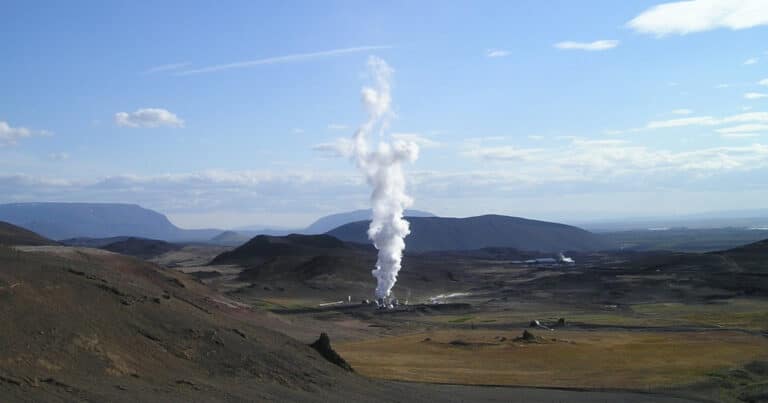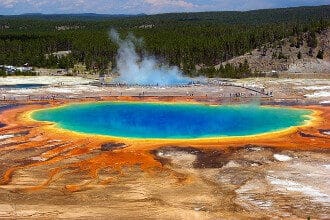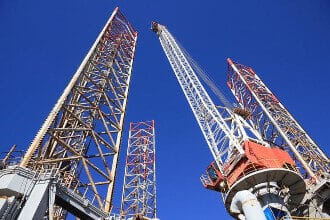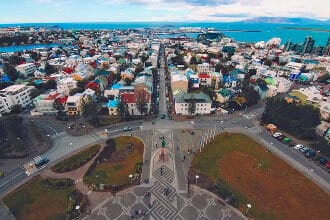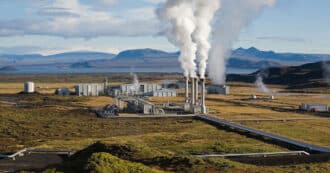By Harry Cooper – Humanity has begun to exhaust its resources trying to power our constantly growing modern societies. Governments, scientists, and companies everywhere have been undergoing an intensive search for new renewable energies and new renewable energy sources.
One of these sources of energy is geothermal energy. Geothermal energy is energy that comes from Earth’s super heated internal layers.
Geothermal energy can be harnessed through geothermal power plants that rely on steam heated by the Earth’s internal energy to spin turbines. Hypothetically, we could rely on geothermal as a source of energy indefinitely, however geothermal does have some limitations.
A geothermal power plant can only be placed in places with lots of geothermal activity, making them not viable in many parts of the world. However as geothermal technologies get better all the time, we are starting to be able to harness geothermal energy in places we weren’t able to before.
What is Geothermal Energy?
Geothermal energy comes from the heat beneath the Earth’s surface. In order to generate electricity from this, power plants must be able to access reservoirs of hot water from deep below the Earth’s surface.
These reservoirs of hot water are heated by the molten rock in the Earth’s mantle. This not only makes them incredibly hot, but also incredibly pressurized.
How Does Geothermal Energy Production Work?
After the wells have been dug to access the reservoirs the water is pumped through a series of pipes. From there the hot water, or steam from the hot water, is used to spin turbines that generate electricity. This electricity is then sent through power lines to power homes and businesses. Once the hot water has been all used up it sent back down into the underground reservoirs. There it is reheated by the Earth’s mantle to be reused later for more electricity generation.
How Renewable is Geothermal Energy?
One of the most important things when considering how viable an energy source is, is whether it is renewable or not. Fortunately, geothermal energy is not just a renewable resource, but a perpetual resource, meaning it will almost never run out.
Perpetual Resources
Renewable resources are ones that will renew and regenerate over time if they are not used up too quickly. Perpetual resources are similar to renewable resource, except that they will never run out regardless of how much we use of them.
Geothermal is Endless Energy
Geothermal energy is very much a perpetual resource. Geothermal heat comes from the slow decay of radioactive elements within the center of the Earth, a process that will go on for as long as the Earth is standing.
Because of this we will never run out of geothermal energy. Hypothetically, the human race could power its homes, businesses, and cities with geothermal energy for as long as they wanted to.
Limits to Geothermal Energy
While geothermal heat sources provide us with hypothetically unlimited energy, extracting it and distributing it to everyone that needs energy is not that simple. Geothermal energy does come with some limitations, most notably, where geothermal power plants can be built.
Location Specific
While there is a massive amount of geothermal energy sitting beneath our feet, this energy can only be accessed in specific spots on the Earth’s surface. Thus, only places with large amounts of geothermal activity are viable places to build geothermal power plants.
On top of that, a geothermal plant requires underground reservoirs of hot water in order to actually extract the energy and generate electricity. This makes expanding geothermal energy use very limited, despite geothermal being such an incredible source of perpetual energy.
Geothermal Going Forward
Almost every kind of renewable energy source has its limitations, wind turbines can’t work if the wind doesn’t blow, solar panels don’t work when the sun doesn’t shine. But geothermal has started to adopt new forms of technology that have come from an unexpected place, that could help geothermal contribute to 20% of US energy.
Drilling for Geothermal
Geothermal energy is limited by the amount of places that power plants can be built. If a place doesn’t have any wells of geothermal heat, it can’t expect to get geothermal power. However another source of unexpected technology has made it possible to put geothermal power plants in places we wouldn’t have been able to before. This technology is fracking.
Fracking is notorious for being one of the most devastating aspects of the fossil fuel industry. By drilling massive wells and and fracturing underground rocks, the oil and gas industry has caused massive environmental damage in the form of earthquakes and pollution. But as it turns out, fracking may be essential in running our world on renewable energy.
Geothermal and Fracking
While it was once, and still is used to extract climate warming, unrenewable fossil fuels, fracking is starting to be used as a technique to dig geothermal wells. Instead of looking for naturally occurring underground reservoirs of hot water, by drilling geothermal wells using fracking, we could put geothermal power plants just about anywhere. The oil and gas industry has been developing drilling technology for decades now, meaning that the technology to build these kinds of wells is already here.
However, one of the biggest challenges to utilizing geothermal in this way is the politics of renewable energy. Most renewable energy tax credits have been passed for wind and solar, and numerous regulation cuts have been given to the oil and gas industry. This red tape has made building artificial geothermal wells much harder than building new oil and gas wells, even though geothermal wells are not necessarily that much harder to build.
The Case of Iceland
Iceland is notorious for its widespread use of geothermal energy. The island nation is on one of the biggest hot beads of geothermal energy in the world. By utilizing this energy Iceland has been able to power 90% of its households from geothermal energy. By supplementing the rest with hydropower, Iceland is able to run itself entirely from renewable energy.
While this may seem like Iceland got a geographical lucky break by being located next to so many geothermal vents, by using fracking to build new geothermal plants, the US could not be very far behind. By creating these artificial geothermal wells, we could spread geothermal across the entire country, and produce enough electricity to power 100 million homes. This is about as much as all the nuclear energy plants in the US are capable of providing. By utilizing renewable energy sources such as geothermal in this way, we can establish a completely renewable society.
Religion and Geothermal Energy
Costa Rica is a battleground in the fight for sustainability. Over 98% of the country’s electricity comes from renewable sources, of which 13% is from geothermal energy. But on April 4th, 2022, Rodrigo Chaves won the presidential election, and now Costa Rica’s environmental progress is in great danger.
According to Rodrigo Chaves, there is an “almost religious fanaticism of saying: let’s not allow Costa Ricans to use and benefit from a resource that god gave us.” Chaves is worried that by not extracting gas, we’re rejecting God’s gifts to humanity. In other words, Chaves feels we have a religious obligation to take advantage of local gas resources.
But look at the damage that gas extraction has caused: pollution, greenhouse gases, and many more. Geothermal energy and other renewable resources are God’s true gifts to humanity, as they are clean, powerful and available for our children to enjoy and benefit from, without harming them in the process. Natural gas is a temptation, an easy solution that ends up harming more than it helps.
Religious people have a unique perspective. We draw upon the ancient texts of our ancestors to inspire righteous actions on behalf of our descendants. God has given us renewable gifts and polluting temptations. For the sake of our descendants, we must know the difference.
* Featured image source

